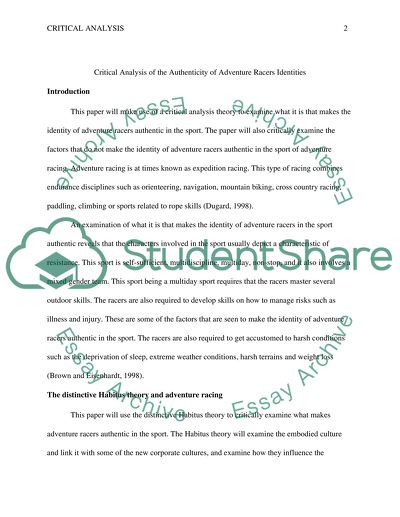Cite this document
(“Critical Analysis of the Authenticity of Adventure Racers Identities Research Paper”, n.d.)
Retrieved from https://studentshare.org/journalism-communication/1404045-critical-analysis-of-the-authenticity-of-adventure
Retrieved from https://studentshare.org/journalism-communication/1404045-critical-analysis-of-the-authenticity-of-adventure
(Critical Analysis of the Authenticity of Adventure Racers Identities Research Paper)
https://studentshare.org/journalism-communication/1404045-critical-analysis-of-the-authenticity-of-adventure.
https://studentshare.org/journalism-communication/1404045-critical-analysis-of-the-authenticity-of-adventure.
“Critical Analysis of the Authenticity of Adventure Racers Identities Research Paper”, n.d. https://studentshare.org/journalism-communication/1404045-critical-analysis-of-the-authenticity-of-adventure.


